
How to topple a dictator? Humor soothes the process. Here is a recent take on Gaddafi. Actually it is no more absurd than the original speech he gave.

How to topple a dictator? Humor soothes the process. Here is a recent take on Gaddafi. Actually it is no more absurd than the original speech he gave.
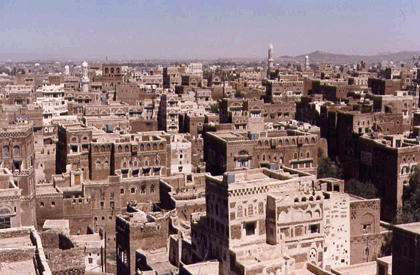
There is currently a contest for interesting sustainable living concepts in the Philips Livable Cities Award. One of these is about collecting rainwater in the Yemeni capital from rooftops. There is a short video on this that can be accessed here. You need to scroll down to the option called “Rainwater Aggregation.” Voting continues until March 24, 2011. If you vote, you might win a trip to the handing out of the award in The Netherlands.
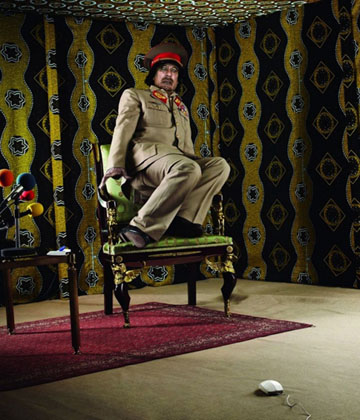
artwork by Creative Commons
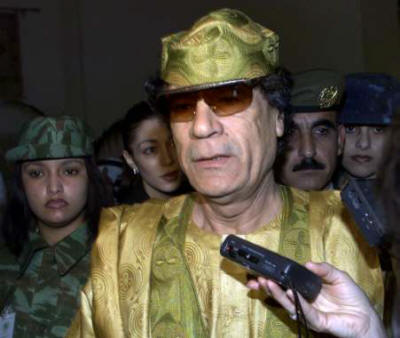
After the outing of two long-standing autocrats in Tunisia and Egypt, the domino theory pizza delivery is now at the shores of Tripoli. What can one say about Colonel Muammar Gaddafi that does not sound like a bad Hollywood movie? He is, of course, also a dear friend of Italy’s clown prince Berlusconi. If Gaddafi did not exist in his Libyan tent, guarded by a bevy of young ladies, Monty Python would have invented him. Here is a guy who came to power at age 27 in the year that Led Zeppelin dominated the pop chart with ‘Whole Lotta Love.” That was over four decades ago. It appears that in Libya today there is not a whole lotta love for this odd and daffy caricature.
Gaddafi is too easy to satirize. Blaming Al-Qaeda for putting drugs in the coffee of young Libyans is about as bizarre a claim as one can imagine. One of the few admirable qualities may be that Gaddafi never promoted himself to General; although he hardly needed to do so given his absolute power. His ruthless response to the recent peaceful protests follows on his long history of brutality against Libyans who dare to oppose him. At present he is clinging on to power in Tripoli with mercenaries and a few surviving “loyal” supporters. Those who stand to lose may stay “loyal” for the moment, but as his power grip nears the end I suspect he will have few if any willing to follow him into exile (or die fighting). Thus far perhaps as many as 2,000 Libyans have been killed with indiscriminate firing in the squares and side streets. The scene has become far uglier than anything that transpired in either Tunisia or Egypt. Fortunately, it appears that a large part of the army has deserted Gaddafi. Continue reading Gaddafi: odd and daffy to the end
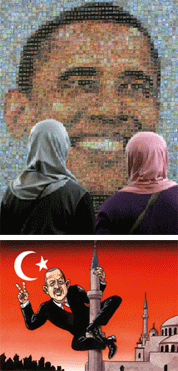
Uprising in Egypt: Islam and the compulsion of the political
by Jeremy F. Walton, The Immanent Frame (SSRC), February 23, 2011
Invariably, contemporary discussions of Islam seem to begin and end with the relationship between Islam and politics—both anti-Islamic pundits and critics of Islamophobia vigorously assert that the mechanics and kinetics of this relationship are central to the evaluation of Islam today. A nexus of paranoia, fear, ignorance, and old-fashioned bigotry typically animates arguments on one side, while those on the other tend toward the polemics and apologetics of subaltern critique. Both camps, however, assume that discussions of Islam necessarily traverse and trouble the domain of the political. This exclusive emphasis on the political marks the difference between Islamphobia à la mode and the older Orientalist discourses of Edward Said’s interrogation: unlike today’s Islamophobia, classical Orientalism constituted a total romance of the East that subsumed political, aesthetic, religious, and cultural forms. In contrast, contemporary Euro-American public debate about Islam evinces what I call the compulsion of the political. While this compulsion achieved hegemony rapidly in the wake of September 11, 2001, it stretches back at least to the seventies and eighties, with high water marks during the Iranian Revolution and the Rushdie Affair.
Much commentary on the recent events in Tahrir Square, throughout Egypt, and across the Middle East has inevitably recapitulated the compulsion of the political in relation to Islam. Despite the deeply ambiguous relationship between the Egyptian pro-democracy demonstrations and politically-oriented Islamic organizations such as the Muslim Brotherhood, pundits from across the political spectrum have seized on the relationship between Islam and politics as the crux of the matter. Arguments have crystallized around two poles, dystopian and utopian, respectively: either the dismantling of Hosni Mubarak’s autocracy will yield the nightmare of a theocracy led by the Muslim Brotherhood (as Ayaan Hirsi Ali fulminated in the New York Times on February 3), or the post-Mubarak era will witness the triumph of pluralist, liberal democracy, with the Muslim Brotherhood as one prominent voice among a multitude (as Tariq Ramadan asserted in a recent interview on al-Jazeera). Continue reading On Egypt and Islam
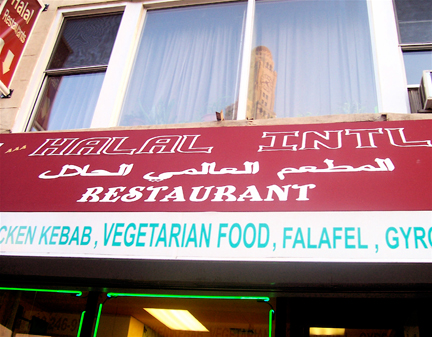
Arab restaurant in Brooklyn, NY; photograph by El-Sayyid el-Aswad
by El-Sayed el-Aswad, United Arab Emirates University
The concept of travel or movement implies the spreading of cultural elements beyond the confinements of locality. Being positioned on the boundary, signifying the division between home and away, inspired Arab Americans to identify themselves with both Arab and non-Arab or Western and non-Western cultural elements. Put differently, Arab Americans have experienced a gradually emerging sense of unified identity, or a reconfiguration of Arab identities, framed by the American culture as well as by the deep consciousness of, and identification with, the heritage of their old homelands, encompassing, for example, Arabic language, traditions or social customs, religious values, art and music. This is especially so since the events of 9/11. Arab Americans have been viewed by many non-Arab Americans as being terrorists or in sympathy with terrorism. They have made open attempts to offer clarification about their heritage and to teach others about their religion (especially Islam) in an attempt to dissuade reluctances, intolerances, and injustices against them. Continue reading Arab Americans’ Hybrid Identity
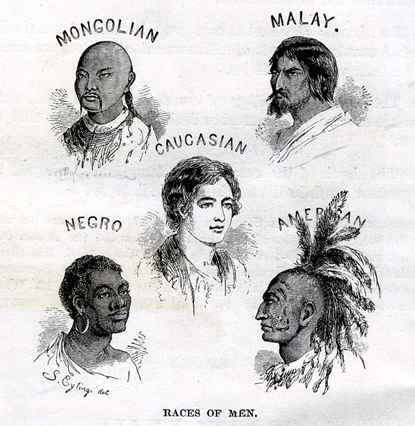
In a previous post I provided an account of the five different states of civilization from an 1879 geography text once owned by my great, great aunt. Apparently the author was enamored with the number “five,†since he also divided the human race into five distinct races. Let’s face it, race at the time was a visual matter of face (and hair) and notice in the image above who was in the middle. Here is the breakdown:
“1. The people inhabiting the different regions of the globe have been divided into five varieties, or races; namely, the Caucasian, or European; the Mongolian, or Asiatic; the Ethiopian, or African; the Malay; and the American or Indian.
2. The Caucasians are distinguished for their light complexion and straight hair. They inhabit nearly the whole of Europe, southwestern Asia, and a large part of America. The comprise the most enlightened and civilized nations of the world. Continue reading A Geography Lesson from 1879: #3: Racial as Facial
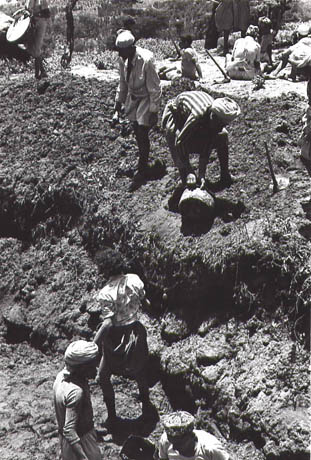
Community cleaning of cistern in al-Ahjur, 1979; photograph by Daniel Varisco
TRIBAL MEDIATION IN YEMEN AND ITS IMPLICATIONS TO DEVELOPMENT
by NAJWA ADRA, AAS WORKING PAPERS IN SOCIAL ANTHROPOLOGY
2010, Volume 19: 1–17.
Introduction
An international phenomenon that has captured the interest of scholars and international development organizations is a continued tendency to resolve conflict through indigenous methods rather than in state courts (Chirayath et al.; Corrin Care 2000; Syria-News.com; UNDP). In Yemen, as in countries as diverse as Kenya and the Solomon Islands, traditional justice is often perceived as familiar, transparent, and participatory. Its focus is reconciliation rather than punishment (Dempsey and Coburn 2010; Dimitrijevic 2006). Specifically in Yemen there is considerable flexibility and adaptability in indigenous tribal procedures and decisions, more so than one usually finds in state justice systems, and decisions are restitutive rather than coercive. Furthermore, indigenous dispute mediation, where fi nes are shared by the entire community, is less costly than the formal legal system. On the other hand, there are concerns that traditional justice may perpetuate social hierarchies by favoring the powerful or discriminating against women (Corrin Care 2000; Kameri-Mbote 2005; Kollapen 2005; Tripp n.d.). In Yemen, as elsewhere, “local strongmen†may co-opt traditional mechanisms by using force in ways that would not have been permitted historically (Dempsey and Coburn 2010). Political scientists worry that resort to traditional justice may undermine state sovereignty.
In this article, I explore these issues as they apply to self-identified tribal communities in Yemen’s Central Highlands through case studies of mediation that I collected during extensive fieldwork between 1978 and 2005 in al-Ahjur. Continue reading Tribal Mediation in Yemen